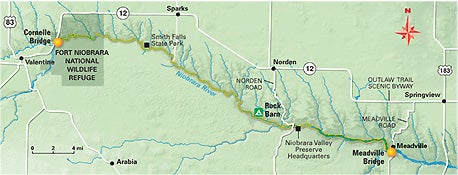How to Do Everything – Gear
Patch a tent hole, layer for extreme conditions, clean your stove, make an old bag warmer, and more.
Hiking | Packing & Planning | Camping | Gear | First Aid & Health | Cooking
Fix Your Tent | Warm Up Your Sleeping Bag, Your Clothes | Clean Your Stove/Pick the Right Matches | Two-Second Tips
PATCH A HOLE IN YOUR TENT
Don’t try to sew a gash smaller than two inches in diameter–it might lead to leaks and stress-related tears. Instead, fix it with adhesive ripstop nylon repair tape (such as Kenyon K Tape) or a pre-cut peel-and-stick tent repair patch (like what MSR sells at msrgear.com).
1) Wipe the damaged area clean with water and/or an alcohol prep pad from your first-aid kit. Let dry.
2) If using tape, cut a piece that extends 1/4 inch beyond the tear. Round the edges with scissors to prevent fraying.
3) Place a hard surface (such as a book or cutting board) under the area.
4) With one hand, pull the torn tent fabric back together as closely as possible. Use the other hand to press the patch on top of the tear. Press from the middle of the patch toward the outer edges, smoothing any ripples or bubbles.
5) If the gash is on the floor or rainfly, repeat the taping process on the opposite side for extra security.
FIX A BUM TENT POLE
- Broken pole Splint the busted section by sliding an aluminum pole sleeve over it (a 3- to 4-inch tube is included with most new tents; MSR and Adventure Medical Kits also sell tent repair kits). Duct-tape both ends to hold in place. Return the pole to the manufacturer for repair when you get home.
- Slack shock cord If a pole goes limp, cold weather and/or repeated use are probably to blame. Pull off the cap from one end of the pole, cut off 5-6 inches of cord, re-knot the end, and replace the cap. Gear shops or the manufacturer can replace the cord when it’s shot.
Hiking | Packing & Planning | Camping | Gear | First Aid & Health | Cooking
Fix Your Tent | Warm Up Your Sleeping Bag, Your Clothes | Clean Your Stove/Pick the Right Matches | Two-Second Tips
ZIP SLEEPING BAGS TOGETHER
Most bag zippers–even on different brands–are compatible, so if you’re buying a new mummy sack for a hot date 15 miles from the trailhead, just make sure your zippers are on opposite sides.
MAKE AN OLD BAG WARMER
Wash it! Dirt and oils accumulate inside sleeping bags over time and inevitably decrease loft–and warmth. Here’s how to clean it: Turn it inside out and wash in a front-loading machine with mild powder soap or Nikwax Down Wash ($9; nikwax.com). Run two rinse cycles, then place in a large dryer with two tennis balls (which prevent the insulation from clumping). When it’s dry, store it suspended from the ceiling or a high hook (so it doesn’t touch the floor) rather than in a stuff sack to protect loft. If all else fails, a removable liner (such as the Cocoon MummyLiner in CoolMax or flannel; $30-$40, designsalt.com) adds a few degrees of warmth and costs less than a new sack.
LAYER FOR EXTREME TEMPERATURE CHANGES
When it’s 70°F by day and 20°F by night (hello, desert in springtime!), think four layers, not three. Always pack a next-to-skin baselayer and a waterproof shell, but split your midlayer into two lightweight, versatile insulation pieces, like a microfleece turtleneck and a puffy vest.
Hiking | Packing & Planning | Camping | Gear | First Aid & Health | Cooking
Fix Your Tent | Warm Up Your Sleeping Bag, Your Clothes | Clean Your Stove/Pick the Right Matches | Two-Second Tips
CLEAN YOUR STOVE
Disassemble as much as possible and wipe clean, removing burnt gunk with a scrubby pad. Grease O rings with silicone lubricant and replace any cracked ones. If carbon has built up in the fuel line (hint: the flame is yellow and sputtering, not blue and steady), remove and scrub or sandpaper it. If your stove has a built-in jet cleaner, turn the burner upside down and shake lightly. Otherwise, use the stove’s wire tool or a needle threader to unclog the jet hole.
SUPERCHARGE YOUR MATCHES
First, pick the right matches: big, fat, strike-anywheres. Melt a few paraffin candles in a double boiler and float matches in the wax for several seconds to completely coat them. Remove with tweezers and let them dry, match head up, on a piece of Styrofoam. Store in a watertight match safe or pill bottle. You’ve just doubled each match’s burn time.
Hiking | Packing & Planning | Camping | Gear | First Aid & Health | Cooking
Fix Your Tent | Warm Up Your Sleeping Bag, Your Clothes | Clean Your Stove/Pick the Right Matches | Two-Second Tips
